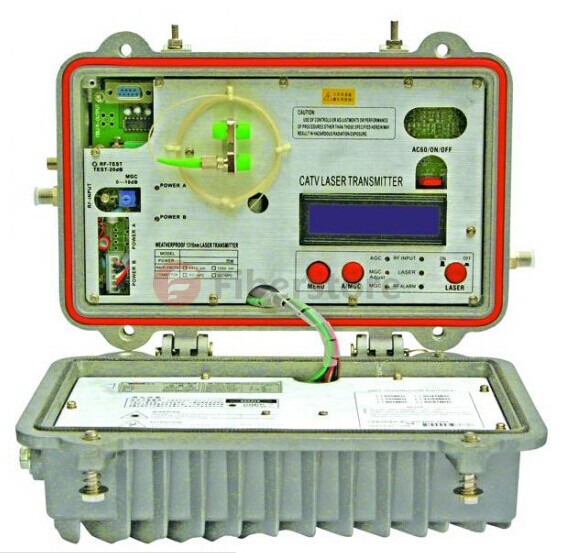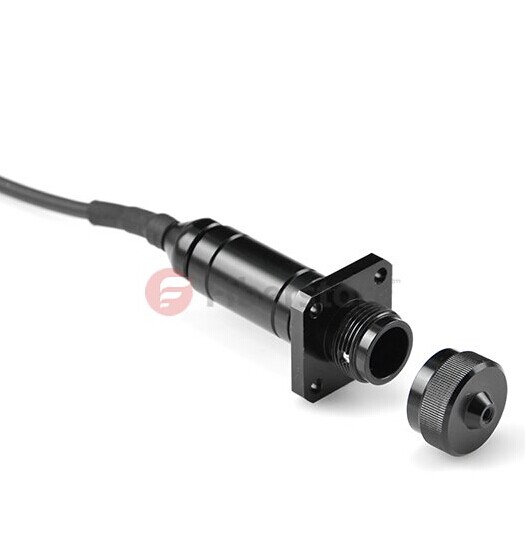As we see, fiber optic transmission has already been the efficient way to transmit a wireless signal and RF signal. Compared to coaxial cable, fiber optic cables has the advantages such as lower signal loss and lower weight, except this, it is also cheaper than coaxial cable. Only by these reasons, fiber optics play an important role in wireless networks. Next we will introduce several fiber optic product in different application for you.
Fiber Optic Transmitter and Receiver
The function of fiber optic transmitter, optical transmitter with AWG see at the figure, is transmitting the RF signal into an optical signal in 1.3μm, the input impedance of the fiber optic transmitter is 50Ω and the output is an optical signal whose brightness is synchronized with the RF voltage. An optical detector internal to the laser transmitter is used to monitor the output power and adjust the bias current of the laser to maintain a constant average optical output. It maintains the consistency in performance, the best linearity and the longest life of the system.

Fiber optic receiver use a high speed detector and for transmitting the optical signal to RF signal. It is usually used with fiber optic transmitter. Low noise linear gain stages boost the signal back up to the desired RF level. Our Fiberstore‘s all fiber optic receivers overtake consistent tests and keep stable and long-term performances.
Fiber Optic Cables and Fiber Optic Connectors
Well, based on the special characteristic of RF in fiber optic applications, single mode fiber cable is the choice for it. The fiber has a core and cladding size of 9/125μm, and the fiber optic connector mainly for the stability and coupling of the light. But in the RF/fiber optic system, angle polished connectors are used more often, such as APC, UPC. Due to them, they can reduce the optical reflections at the connector. At the same time, we need to know that reflection in the system can cause increased noise, dirt and so on, then the connector will cause higher connector loss but also reflections. So the connector need to keep clean, the right way to keep clean is that using 99% alcohol and lint free wipes, always replace the cap on the ferrule when the connector is not in use.
Applications
In Building public safety, Fiberstore’s technology and Bidi fiber optic transceiver deliver the signal across the fiber optic network for in-building signal distribution. The benefits of fiber optics are endless. Fiberstore’s modular devices transmit RF signal in fiber easily and they keep distortion-free communications in the building of emergency, fire and police radio RF systems. Facing with the system capacity and improving the reliability of the network. Fiberstore is toward the direction of lower telecommunication cost, safe and reliable for users.
In military aspect, Today’s global battlefields are sophisticated networks of Army, Navy, Coast Guard and Air Force defense organizations requiring robust, they need monitoring and tracking, as well as high quality voice, video and data communications, as for this requirements, Fiberstore RF solution unmatched performance for radio frequency transport applications ranging from low frequency through VHF, UHF to satellite-band transmissions. Fiber optic cables provide the highest performances for soldier’s safety in military applications. The figure shows the special connector that can be used in the military application. We are very strict with the design and quality of fiber optic connector.
With the developments of the Internet, wireless LAN technology and protocols such as IEEE 802.11, Fiberstore;s fiber optic transceiver technology provides flexibility in architecture design, extended radio frequency coverage and enhanced performance in the wireless spectrum, and provide higher ability for wireless users. Fiberstore is doing his best for faster and more reliable communications solutions.

